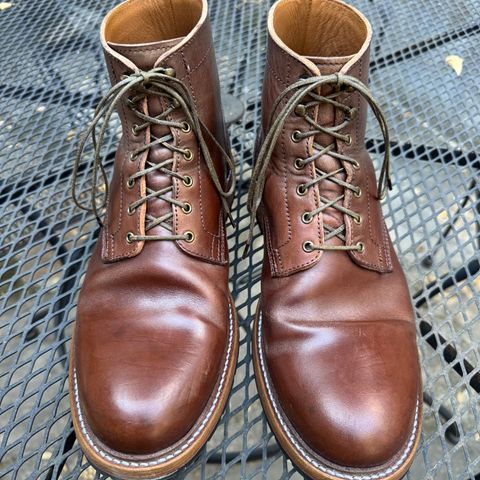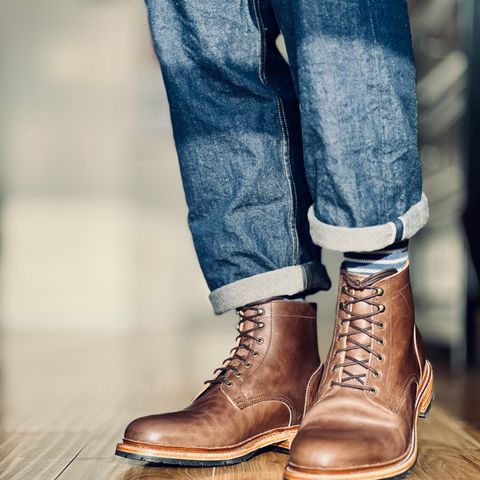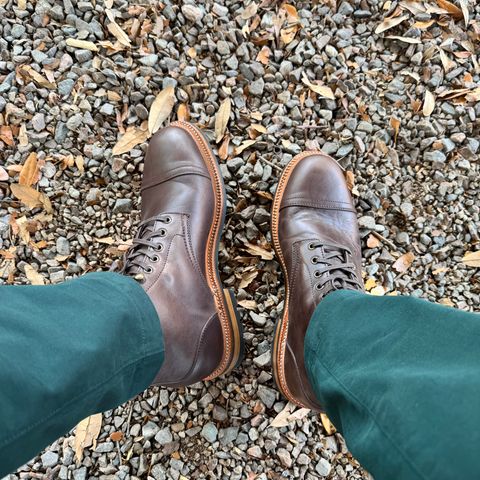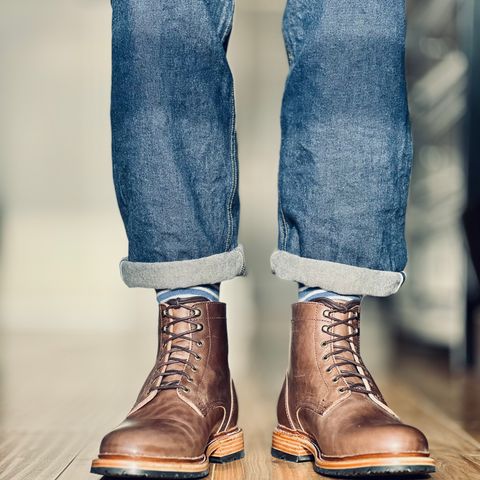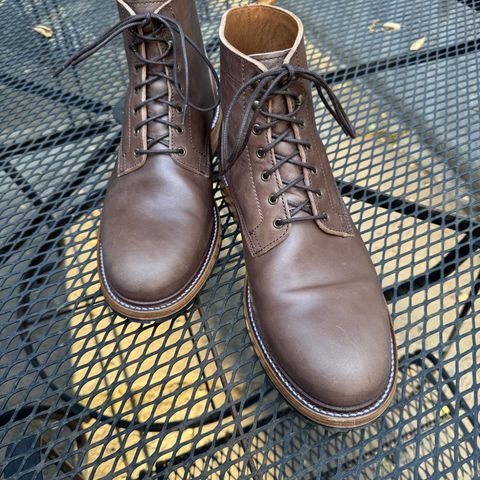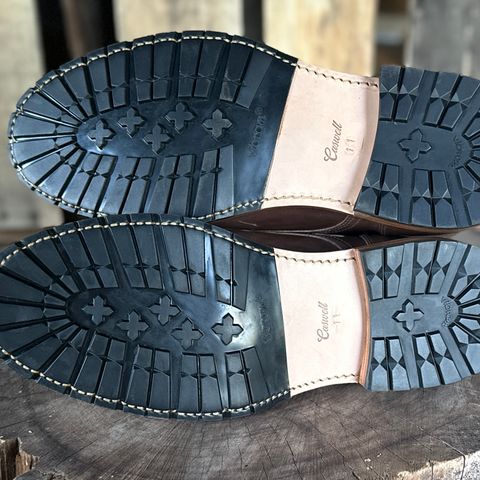About
Horween Horsebutt is a premium leather produced by the Horween Leather Company using hides sourced from the hindquarter region of horses. This specialized leather represents one of the most durable and sought-after materials in Horween's catalog, prized for its exceptional strength, dense fiber structure, and superior aging characteristics.
About
Horween Horsebutt is a premium leather produced by the Horween Leather Company using hides sourced from the hindquarter region of horses. This specialized leather represents one of the most durable and sought-after materials in Horween's catalog, prized for its exceptional strength, dense fiber structure, and superior aging characteristics.
Material Origin and Selection
Horsebutt leather originates from the hindquarter region of horses, specifically the area covering the rump and upper rear legs. This particular section of the hide is valued for its dense, compact fiber structure, which results from the muscular development and natural stress patterns in this anatomical region. The limited availability of suitable horse hides makes horsebutt leather relatively scarce compared to more common leather types.
Horween's selection process involves careful inspection of each hide to identify sections suitable for horsebutt production. The company evaluates factors including fiber density, thickness consistency, and surface quality to ensure only premium-grade material proceeds through the tanning process.
Tanning Process
Horween processes horsebutt leather using various tanning methods, depending on the intended application and customer specifications. The company employs both chrome tanning and vegetable tanning processes, each producing distinct characteristics in the finished leather.
Chrome Tanning: The chrome tanning process creates a more flexible, water-resistant leather suitable for modern applications. This method involves treating the hide with chromium salts, resulting in a stable, durable material with good aging properties.
Vegetable Tanning: Traditional vegetable tanning using bark extracts produces a firmer, more structured leather preferred for applications requiring shape retention and traditional characteristics. This process takes considerably longer but results in leather that develops a rich patina over time.
Characteristics
Horween Horsebutt exhibits several distinctive properties that differentiate it from other leather types:
Fiber Density: The dense, compact fiber structure provides exceptional strength and durability. This characteristic results from the natural muscle development in the hindquarter region, creating leather with superior tear and puncture resistance.
Surface Quality: Horsebutt typically presents a smooth, fine-grained surface with minimal natural markings. The tight fiber structure contributes to a refined appearance that accepts various finishes well.
Thickness Consistency: The material maintains relatively consistent thickness throughout, making it suitable for applications requiring uniform material properties.
Shape Retention: The dense fiber structure provides excellent shape retention, with minimal stretching or deformation under normal use conditions.
Applications
Due to its exceptional durability and premium characteristics, Horween Horsebutt finds application in specialized uses where superior performance is required:
Premium Footwear: High-end shoemakers and bootmakers utilize horsebutt for uppers in dress shoes and specialty footwear, taking advantage of its durability and refined appearance.
Leather Goods: Premium wallets, belts, and small leather goods benefit from the material's strength and aging characteristics. The smooth surface and fine grain make it particularly suitable for refined accessories.
Industrial Applications: Specialized industrial uses requiring leather with exceptional durability may specify horsebutt for its superior strength characteristics.
Artisan Projects: Craftspeople working on high-end custom projects often choose horsebutt for its workability and premium appearance.
Quality Assessment
High-quality Horween Horsebutt should exhibit several key characteristics that indicate proper selection and processing:
Consistent thickness throughout the hide section
Dense, tight fiber structure with minimal looseness
Smooth surface texture with fine, even grain
Good flexibility appropriate to the tanning method used
Uniform color and finish application
Minimal surface defects or natural markings
Comparison to Other Horse Leathers
Horsebutt differs from other horse leather cuts in several important ways:
Fiber density: Generally denser than horsehide strips or belly sections
Thickness: Typically thicker and more consistent than other anatomical regions
Surface quality: Often superior to other sections due to reduced natural markings
Availability: More limited than standard horsehide due to specific anatomical sourcing
Historical Context
The use of horse leather, including horsebutt, has deep historical roots in American leather production. During the early to mid-20th century, when horses were more common in transportation and agriculture, horse leather was frequently used for various applications requiring exceptional durability.
Horween's continued production of horsebutt leather represents a commitment to traditional materials and craftsmanship techniques. As the availability of horse hides has decreased with changes in transportation and agriculture, horsebutt has become increasingly specialized and valued by discerning customers.
Availability and Sourcing
Due to the limited availability of suitable horse hides and the specific anatomical requirements for horsebutt production, this leather type is typically available on a limited basis. Customers seeking horsebutt leather often work directly with Horween or authorized distributors to ensure availability for specific projects.
The specialized nature of this material means pricing reflects both the quality of the raw material and the careful processing required to produce premium horsebutt leather.
See Also
References
Information compiled from Horween Leather Company technical documentation, leather industry publications, and historical records. Material characteristics based on industry standards and manufacturer specifications.
